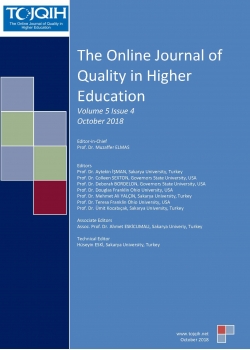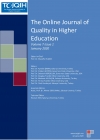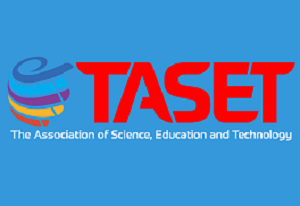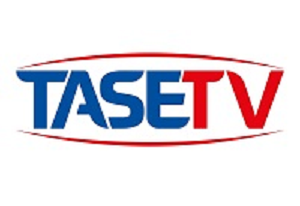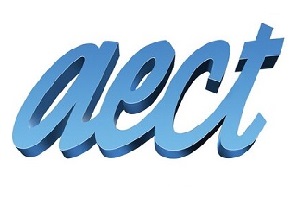TOJQIH - Volume 5 - Issue 4 - October 2018
 INTRODUCTION OF RESEARCH UNIVERSITIES AND RE-POSITIONING OF ART FACULTIES IN TURKEY 1
INTRODUCTION OF RESEARCH UNIVERSITIES AND RE-POSITIONING OF ART FACULTIES IN TURKEY 1 H. Esra Oskay Malicki
Abstract:
In this paper, I aim to discuss the introduction of research universities into the Turkish university system and its relevance for fine art faculties in Turkey, the possible impacts it will have on the position of art departments in relation to the changing ideas of university. In this regard, I will discuss what happens to "academic research", how it is defined under this new scheme and where does the particular form of artistic practice stand in this context. The recent introduction of research university concept urges us to think what art has art anything to do with research, and hence, what status artistic thinking holds in the newly emerging academic model. This current discussion allow us to focus on the marginal status of art education within the academia and how this exercise on thinking the position of art schools in relation to the academy can help us to reimagine both the university and artistic thinking anew.
 LEGAL ARRANGEMENTS FOR THE DISABLED STUDENTS IN HIGHER EDUCATION INSTITUTION AND THE CONFIGURATION OF THE DISABLED STUDENT UNIT AT SAKARYA UNIVERSITY
LEGAL ARRANGEMENTS FOR THE DISABLED STUDENTS IN HIGHER EDUCATION INSTITUTION AND THE CONFIGURATION OF THE DISABLED STUDENT UNIT AT SAKARYA UNIVERSITY G├╝lba┼¤ak Yerli
Abstract:
According to Article 26 of the Universal Declaration of Human Rights "Everyone has the right to education. Higher education, according to their ability, everyone must be open with a full equality ". According to this matter, physical disability should not hinder the individual's right to education. In addition, with the rapid changes in the field of health and psychosocial rehabilitation, along with the efforts of the disabled individual to exist within the society, the disabled individuals have started to take active place in the life. The number of students with disabilities in universities is also increasing and it is necessary to carry out multi-directional studies towards the needs of these students. In this respect, the Higher Education Institution has prepared the "Higher Education Institutions Handicapped People Consultation and Coordination Regulations", in which the regulations to support the students who will organize the learning process of the disabled students are included. With this regulation, the Higher Education Institution requested the formation of student units with disabilities from universities. The purpose of this study is to evaluate the process of structuring the disability student unit in Sakarya University and the work carried out in this process in accordance with the legal regulations for disabled students in Higher Education and related legislation. The study was prepared by process analysis and a descriptive method.
 PROFESSIONALIZATION AND TRANSMISSION OF VALUES IN FINE ARTS: RECYCLE PROJECT
PROFESSIONALIZATION AND TRANSMISSION OF VALUES IN FINE ARTS: RECYCLE PROJECT Roc├Ło Garriga Inarejos, Silvia Mart├Ł Mar├Ł
Abstract:
Recycle Project is carried out with the participation of the students of the subjects of Volume I (1st year) and Design and Management of the Exhibition Space (3rd and 4th year). The 3rd and 4th graders are in charge of designing, managing and coordinating the start-up of the activity. The students of Volume I, make molds of recyclable objects (bottles, cans, bricks ...) to obtain several reproductions. They work their surface using an aesthetic related to Pop-Art. The activity culminates with the exhibition of these pieces in the public space. The people who approach the place will be able to take an artistic piece in exchange for two recyclable objects. Through this experience the quality of their training increases as they put into practice a series of resources that they could not have obtained other ways.
 QUALITY MANAGEMENT IN HIGHER EDUCATION ADMISSION SYSTEM
QUALITY MANAGEMENT IN HIGHER EDUCATION ADMISSION SYSTEM Mengmeng Chen
Abstract: The industry of higher education institutions such as colleges and universities are highly competitive amongst themselves for the best students, professors, researchers, industry partners, and athletic programs. Charged with attracting top quality clientele who will not only attend the institution, but help the university reach its objectives and goals, the marketing department becomes paramount to the organizationŌĆÖs success. For many years higher institution attendance has increased across the board. As more technical colleges and alternative career paths with specialized training become more appealing, statistical analysis indicates that higher institution attendance numbers are decreasing. If this trend continues, colleges and universities will be forced to become more competitive to entice high quality clientele to attend their organization. The importance of marketing the institution will become critical to ensure the continued success of the organization. Higher education institutions can target ideal candidates for their universityŌĆÖs programs through the use of statistical analysis techniques such as lead scoring, time series control, continuous improvement, and quality management tracking. Considered quality leads, ideal candidates possess a high likelihood of attending the university and garnering greater r eturns for the university through academic or athletic achievement.
 THE ASSESMENET OF COACHING AS AN EDUCATIONAL METHOD BY STUDENTS OF MANAGEMENT
THE ASSESMENET OF COACHING AS AN EDUCATIONAL METHOD BY STUDENTS OF MANAGEMENT Zuzana Birknerov├Ī, Miroslav Frankovsk├Į, Zuzana Dankova
Abstract:
The key attribute of society development, development of organizations as well as development of individual is education. In terms of understanding the contemporary social environment as turbulent with unceasing changes, education enables us to confront these changes, to respond to changes and to propose the changes. In the article we present the results of the research on the assessment of couching approach within the university education of management students. Research was attended by 268 students of the Faculty of Management, University of Prešov in Prešov. From the obtained data, 119 students undertook the coaching method of education at the beginning of semester and 149 students completed the education without coaching form of learning. Students assessed the coaching method by the original methodology CEM (Couching as an Educational Method). The results clearly confirmed the suitability of methodology as well as extracting factor structure (factors of personal development and managerial development). It is inevitable to note the positive assessment of coaching approach as educational method at the level of general indicators as well as at the level of extracted factors and itemized analysis. At the same time, students who undertaken a coaching method of education assessed this method more positively.
 THE INNOVATIVE TEACHER: A KEY FACTOR FOR IMPROVING ACADEMIC PERFORMANCE
THE INNOVATIVE TEACHER: A KEY FACTOR FOR IMPROVING ACADEMIC PERFORMANCE Mar├Ła Jos├® FERN├üNDEZ-MAQUEIRA, Francisco Javier BLANCO-ENCOMIENDA, Mar├Ła Jos├® LATORRE-MEDINA
Abstract:
Ceuta, a Spanish city located in the North area of Africa, is the city with the lowest rates of academic performance and the highest rates of school drop-out in Spain. Faced with this situation, the researchers launch in unison the alarm to the dramatic social, economic and cultural consequences that this phenomenon may have in the city. There are many factors that have been studied trying to offer a solution to this worrying phenomenon. The aim of this research is to find out the professional profile of teachers in the Autonomous City of Ceuta and to study if the teachers' responses are associated with the identification variables. The results of this study illustrate the fact that methodological innovation in the city is not a reality in the daily teaching process. We also conclude that the absence of the innovative teacher is more significant in Secondary Education, level with a higher rate of school failure.
 WHAT CAN BE DONE FOR THE UNIVERSITY TO BECOME AN ENTREPRENEURIAL UN─░VERSITY? 47
WHAT CAN BE DONE FOR THE UNIVERSITY TO BECOME AN ENTREPRENEURIAL UN─░VERSITY? 47 Mustafa Bayrak├¦─▒, Ceren ├ćetin
Abstract:
Universities have undergone significant transformation as a result of new paradigms in the world. Entrepreneurship is found as one of the solutions for this adaptation process by developed countries. Entrepreneurship in higher education forms a basis for innovation. In this regard, the paper presents the changes and challenges that the universities have to face nowadays, offering a model of entrepreneurial university, with its necessary characteristics. It depicts how modern universities may benefit from different types of entrepreneurship by transforming its universities to a model of productive, innovative and quality assured institutions while showing the triple helix system of relationships between university, industry and government.

